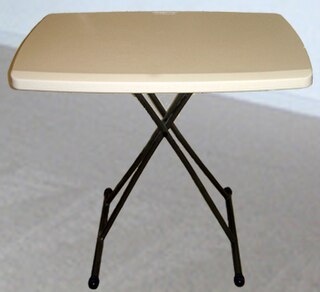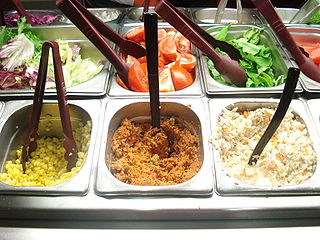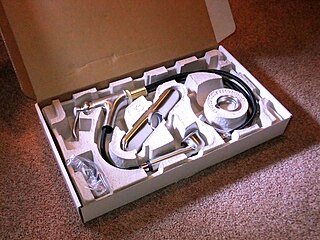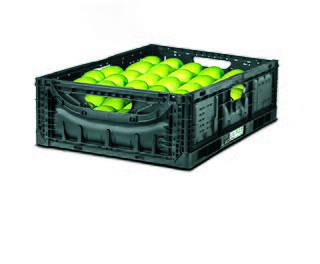
A take-out or takeout ; carry-out or to-go ; takeaway ; takeaways ; grab-n-go; and parcel is a prepared meal or other food items, purchased at a restaurant or fast food outlet with the intent to eat elsewhere. A concept found in many ancient cultures, take-out food is common worldwide, with a number of different cuisines and dishes on offer.

A frozen meal is a packaged frozen meal that comes portioned for an individual. A frozen meal in the United States and Canada usually consists of a type of meat for the main course, and sometimes vegetables, potatoes, and/or a dessert. The main dish can also be pasta or fish. In European frozen meals, Indian and Chinese meals are common. Another form of convenience food, which is merely a refrigerated ready meal that requires less heating but expires sooner, is popular in the UK.

A carton is a box or container usually made of liquid packaging board, paperboard and sometimes of corrugated fiberboard. Many types of cartons are used in packaging. Sometimes a carton is also called a box.

A veggie burger is a hamburger patty that does not contain meat. It may be made from ingredients like beans, especially soybeans and tofu, nuts, grains, seeds or fungi such as mushrooms or mycoprotein.

A mess kit is a collection of silverware and cookware used during camping and backpacking, as well as by military personnel for food and military rations. There are many varieties of mess kits available to consumers, and militaries commonly issue them to their personnel.
Thermoforming is a manufacturing process where a plastic sheet is heated to a pliable forming temperature, formed to a specific shape in a mold, and trimmed to create a usable product. The sheet, or "film" when referring to thinner gauges and certain material types, is heated in an oven to a high-enough temperature that permits it to be stretched into or onto a mold and cooled to a finished shape. Its simplified version is vacuum forming.

Modified atmosphere packaging (MAP) is the practice of modifying the composition of the internal atmosphere of a package in order to improve the shelf life. The need for this technology for food arises from the short shelf life of food products such as meat, fish, poultry, and dairy in the presence of oxygen. In food, oxygen is readily available for lipid oxidation reactions. Oxygen also helps maintain high respiration rates of fresh produce, which contribute to shortened shelf life. From a microbiological aspect, oxygen encourages the growth of aerobic spoilage microorganisms. Therefore, the reduction of oxygen and its replacement with other gases can reduce or delay oxidation reactions and microbiological spoilage. Oxygen scavengers may also be used to reduce browning due to lipid oxidation by halting the auto-oxidative chemical process. Besides, MAP changes the gaseous atmosphere by incorporating different compositions of gases.

A TV tray table, TV dinner tray, TV table, or personal table is a type of collapsible furniture that functions as a small and easily portable, folding table. These small tables were originally designed to be a surface from which one could eat a meal while watching television. The phrase tray-table can also refer to a fold-away tray, such as those found in front of airline seats.

Gastronorm (GN), sometimes spelled Gastro-Norm, is a European standard for kitchenware tray and container sizes that is commonly seen worldwide in the catering and professional food industry, as well as in certain parts of the high-end consumer market. Gastronorm is generally used worldwide except in the United States and some parts of Canada, which have their own domestic systems. The gastronorm standard was first introduced in Switzerland in 1964 and became an official European standard in 1993 with the EN 631 standard.

The banana leaf is the leaf of the banana plant, which may produce up to 40 leaves in a growing cycle. The leaves have a wide range of applications because they are large, flexible, waterproof and decorative. They are used for cooking, wrapping, and food-serving in a wide range of cuisines in tropical and subtropical areas. They are used for decorative and symbolic purposes in numerous Hindu and Buddhist ceremonies. In traditional homebuilding in tropical areas, roofs and fences are made with dry banana-leaf thatch. Banana and palm leaves were historically the primary writing surfaces in many nations of South and Southeast Asia.

Molded pulp or molded fiber is a packaging material, that is typically made from recycled paperboard and/or newsprint. It is used for protective packaging or for food service trays and beverage carriers. Other typical uses are end caps, trays, plates, bowls and clamshell containers.

An egg carton is a carton designed for carrying and transporting whole eggs.

A drink carrier, sometimes also known as a cup carrier, beverage carrier or cup holder is a device used to carry multiple filled beverage cups at the same time.

Disposable food packaging comprises disposable products often found in fast food restaurants, takeout restaurants and kiosks, and catering establishments. Food-serving items for picnics and parties are very similar. Typical disposable foodservice products are foam food containers, plates, bowls, cups, utensils, doilies and tray papers. These products can be made from a number of materials including plastics, paper, bioresins, wood and bamboo.

A clamshell is a one-piece container consisting of two halves joined by a hinge area which allows the structure to come together to close. Clamshells can be made to be reusable and reclosable or can be sealed securely.

IFCO trays are a type of reusable packaging for transporting fresh food produce. IFCO SYSTEMS is the name of the company that first developed a pooling service for reusable plastic trays for fresh produce in 1992, when the company was founded in Pullach, Germany. IFCO is the acronym for International Food Container Organization.

A roasting pan is a piece of cookware used for roasting meat in an oven, either with or without vegetables or other ingredients. A roasting pan may be used with a rack that sits inside the pan and lets the meat sit above the fat and juice drippings.

A bag is a common tool in the form of a non-rigid container. The use of bags predates recorded history, with the earliest bags being lengths of animal skin, cotton, or woven plant fibers, folded up at the edges and secured in that shape with strings of the same material.
Reusable packaging is manufactured of durable materials and is specifically designed for multiple trips and extended life. A reusable package or container is “designed for reuse without impairment of its protective function.” The term returnable is sometimes used interchangeably but it can also include returning packages or components for other than reuse: recycling, disposal, incineration, etc. Typically, the materials used to make returnable packaging include steel, wood, polypropylene sheets or other plastic materials.























